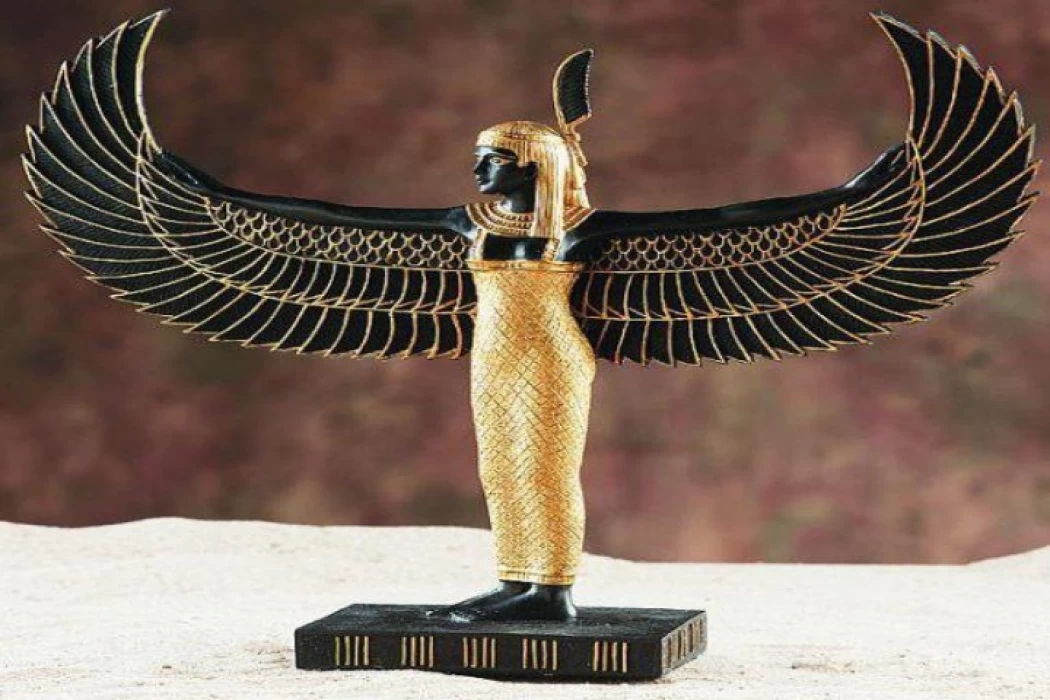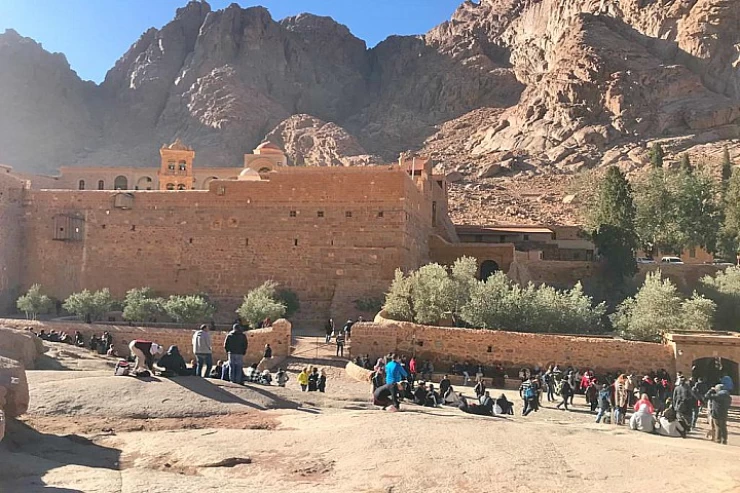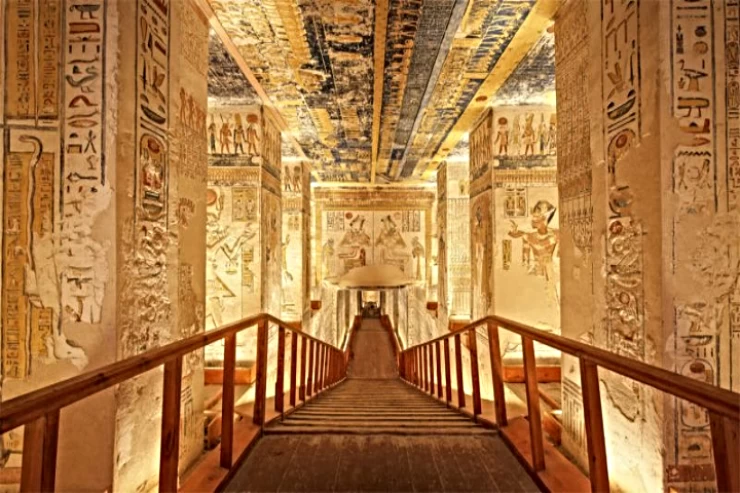
Ma'at | The Goddess Of Truth And Justice
Ma'at | The Goddess Of Truth And Justice
Maat or maʻat: The goddess of truth and justice, sometimes symbolised by a feather. Maat is also credited with controlling the seasons and the movement of the stars, which is why Egypt was known as the land of the Nile and Maat. She is represented as a lady with an ostrich feather on her head, the symbol of justice, and in the image we find her holding the key of life (Ankh) in one hand and the scepter of judgement in the other.
The real reason behind Maat's association with the ostrich feather as her symbol remains unclear. It may be due to the feathers' association with flight, and thus with the cosmic world of the sky as a cosmic goddess; or perhaps due to the lightness of the feather, which expresses purity and purity and the unburdenedness of sins and sins; or for another reason that is unknown to us.
Maat was associated with many gods and goddesses, most notably the cosmic gods, as she is the daughter of the god Ra, and had a prominent role in the journey of the sun and solar songs. Maat embodies the cosmic order that Ra entrusted the king with establishing and establishing the rule of the earth. The king had to do this and perform the ritual of offering ‘Maat’, a metaphor for all of this and the ‘Maat offering’.
She was also associated with the goddess ‘Chhoti’ The god of wisdom and knowledge, she was known as his wife and appeared with him in the scene of weighing the heart of the deceased, as well as appearing on the boat of the sun god ‘Ra’. Maat was associated with the king, who was responsible to the gods for establishing order and justice, and establishing the ‘Maat’ in its rightful place that the gods created for the universe.
Furthermore, it is stated that in ancient Egyptian beliefs, the heart of the dead man was placed on one pan of a scale and the feather of the goddess Maat, on the other, to compute the number of deceased persons in the underworld. If the balance rested in favor of the heart, the soul would go to Heaven, but if the feather tipped the scale, it was believed that the soul would go to Hell which ancient Egyptians represented as a fictional aggressive animal called Ammut with a crocodile's head, a lion's torso and the back of a hippopotamus. The underworld had a court with forty-two judges, the same number of the provinces of Egypt who were under the authority of Osiris.
Anubis would accompany the deceased to the courtroom, and the judges would start questioning the deceased about his actions in the world, whether he followed the Maat (righteous path) or was one of the sinners. The deceased takes on the persona of a defendant: Neither have I killed, nor have I shocked anyone, nor have I reported my boss, nor thieved. I have been a benefactor to the underprivileged by providing food, clothing and assistance and quenched the thirst of many. This is where the members of the tribunal started inquiring from him about the deities and he had to recite them all with the utmost caution lest he misses one.
Ma`at Goddess in Ancient Egypt
Goddess Ma`at according to ancient Egyptian religion is a goddess of truth and justice, Ma`at is the daughter of Re god and wife to Thout god of knowledge Ma`at goddess represented in women form with ostrich feather above her head and holding the Ankh which means the life key and the other hand holding the mace
In the underworld of the ancient Egyptians, the heart of the dead were placed on the scales on one side and the feather of the goddess Maat on the other side. If the deceased’s heart tilted, he would enter Paradise in their beliefs, but if the feather swelled, he would enter Hell, which was represented by ancient Egyptian beliefs in the form of an imaginary predatory monster named Amamut, whose head is the head of a crocodile and his body is the body of a lion and its back is the body of a hippo. The court in the underworld consisted of 42 judges, the number of regions of Egypt, headed by Osiris.
The 42 Laws of Maat: Ancient Egyptian Society's Ethical Underpinnings The fundamental tenets of justice and morality in ancient Egypt were established by the 42 Laws of Maat.
The conception of the ancient Egyptians on Judgment Day was that Anubis would accompany the dead to the courtroom, and judges would begin to question the deceased about his actions in this world, and whether he was following the Maat (the right path) or was he among the sinners. And the deceased begins to defend himself and says: I did not kill anyone, I did not expose a person, and I did not complain about a worker with his boss, and I did not steal. I was feeding the poor, and I was given clothes to the naked, and I helped people, and I used to give the thirsty water. Then the judges began to ask him about his knowledge of the gods, so he had to mention the gods by their names and beware of forgetting one of them.
To the pharaohs, Ma'at was represented as a goddess with an ostrich feather on her head, a symbol of justice. The goddess held the key of life, Menkh, in one hand and a scepter in the other, symbolizing balance. She was credited with controlling the seasons and the movements of the planets and stars.
The Cult of Maat
While the cult of Maat was more than limited, the respect she commanded was, however, boundless. For maat (justice) was always a cornerstone of social balance. Respect among humankind, in particular, ensured a measure of salvation. A salvation that Maat would appreciate during the final judgment rendered by Osiris. "To speak according to Maat" meant to speak the truth. At the Last Judgment, the heart spoke according to Maat and could not lie. Upon death, no deceased could avoid the trial of the Last Judgment.
There, the weight of good and evil accumulated in each person's heart was calculated. Thus, the deceased who had lived with justice and kindness would be assured of having their heart compared to Maat, to their advantage. It was during psychostasis (the "weighing of the soul") that everything concerning their future in the afterlife was decided. Maat as a principle was created to meet the complex needs of the emerging Egyptian state, which embraced diverse peoples with conflicting interests. The development of such rules sought to avoid chaos, and Maat became the basis of Egyptian legislation.
The concept of "Maat" was the exact standard system for everything, which represents the basis of the world, and everything that corresponds to the purposes of the Creator deity. Hence, it is imperative for humans to preserve and approve them, and to restore "Maat" and the system to its proper condition if it is exposed to any defect or disorder.
And since the Egyptian view of the maat as the essence and material element upon which the whole world lives, and as a power for gods and for the living and the dead among humans, the "Coffins Texts" mentioned that gods live on (Maat), and the gods approved "Maat" on earth, and its approval was on The land is the responsibility of the king, who represents the gods among men, and lives like it on (Maat).
















